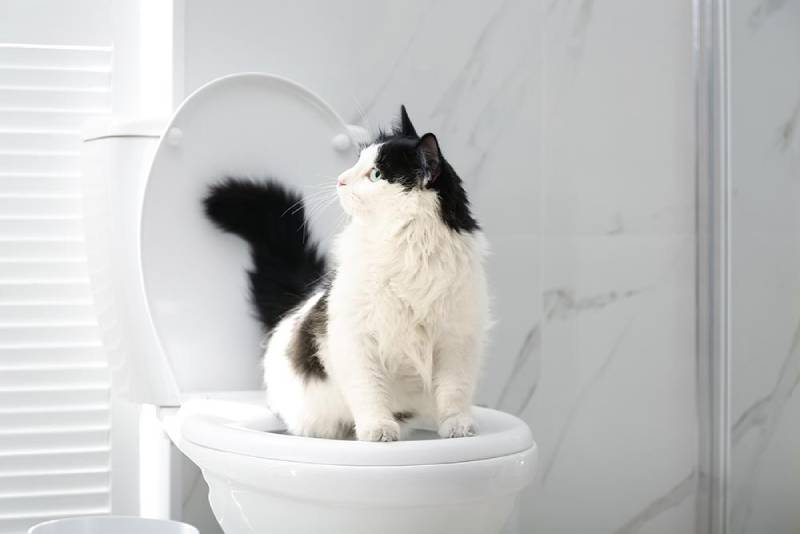Why Flushing Cat Poop Down Your Toilet May Cause Problems - Recommendations for Proper Disposal
Why Flushing Cat Poop Down Your Toilet May Cause Problems - Recommendations for Proper Disposal
Blog Article
Were you on the lookout for selective information How to Dispose of Cat Poop and Litter Without Plastic Bags?

Intro
As feline proprietors, it's important to be mindful of how we take care of our feline good friends' waste. While it may appear convenient to flush cat poop down the toilet, this method can have damaging effects for both the setting and human wellness.
Ecological Impact
Flushing pet cat poop introduces harmful microorganisms and parasites into the water supply, posturing a significant threat to aquatic ecosystems. These contaminants can negatively influence aquatic life and concession water high quality.
Wellness Risks
In addition to ecological concerns, flushing pet cat waste can additionally position health risks to humans. Cat feces may include Toxoplasma gondii, a parasite that can create toxoplasmosis-- a possibly serious health problem, especially for expecting ladies and people with damaged immune systems.
Alternatives to Flushing
Luckily, there are much safer and much more responsible means to deal with cat poop. Take into consideration the adhering to options:
1. Scoop and Dispose in Trash
The most common approach of taking care of pet cat poop is to scoop it right into a biodegradable bag and toss it in the trash. Be sure to use a devoted trash scoop and deal with the waste promptly.
2. Usage Biodegradable Litter
Choose biodegradable pet cat trash made from materials such as corn or wheat. These clutters are environmentally friendly and can be safely disposed of in the garbage.
3. Hide in the Yard
If you have a yard, consider hiding cat waste in a marked area away from vegetable yards and water sources. Make certain to dig deep adequate to avoid contamination of groundwater.
4. Mount a Pet Waste Disposal System
Purchase a pet dog waste disposal system particularly designed for feline waste. These systems make use of enzymes to break down the waste, decreasing smell and environmental influence.
Final thought
Liable family pet ownership prolongs beyond offering food and sanctuary-- it also includes proper waste administration. By avoiding flushing feline poop down the commode and selecting alternative disposal techniques, we can decrease our environmental impact and protect human health.
Why You Should NEVER Flush Cat Poop (and/or Litter) Down Your Toilet
The Problem with Litter
The main function of litter is to solidify and adhere to your cat’s waste. While this makes litter excellent for collecting cat poop and urine, it’s also the exact property that makes it a nightmare when flushed down the toilet.
Cat litter can and will clog pipes. There is non-clumping litter, but it’s still quite heavy and can build up in pipes. This is true even of supposed “flushable litter.”
The problems only compound when the litter is already clumped into cat waste. Toilet paper is among the more flushable things, and even too much of that will clog a toilet.
The Problem with Cat Poop
Sewers and septic systems are designed with human waste in mind. The microbes that help break down human waste don’t work on cat waste. Additionally, cat poop plays host to the parasite Toxoplasma gondii.
When flushed, this parasite can enter the environment in places it was never meant to, posing a risk to pregnant women, their unborn children, and other people with compromised immune systems. While it might not seem possible, flushing cat poop can indeed introduce this parasite to the public water supply.
These reasons are why, even if you’ve trained your cat to go on the toilet and flush, which is possible, it’s still not a good idea. Also, pregnant women and the immunocompromised shouldn’t change litter, either.
How to Handle Litter
The best way to handle litter is to simply put it in a plastic bag and place it in the trash. Avoiding environmental risks and possible plumbing damage is worth the extra effort.
You can also invest in devices that seal away your cat’s waste in a separate compartment, so you don’t have to change the litter nearly as often. They’re also safer for pet owners because they limit the possibility of Toxoplasma gondii exposure.
Disposing of litter the old-fashioned way will ensure you won’t have to worry about any issues that flushing the waste can potentially cause.
Take Care of Clogged Pipes with Stephens Plumbing, Heating & Air Conditioning
The reasons you should never flush cat poop down your toilet are numerous, but sometimes the inevitable happens despite your best efforts.
Stephens Plumbing, Heating & Air Conditioning is ready to help if you’re experiencing litter-blocked plumbing. Whether you need us in an emergency or want to schedule regular maintenance, we’re here for you.
https://www.stephensplumbing.net/bathroom-plumbing/never-flush-cat-poop-down-your-toilet/

As a devoted reader about How to Dispose of Cat Poop and Litter Without Plastic Bags, I think sharing that excerpt was really useful. If you please take the opportunity to promote this blog posting if you enjoyed reading it. I take joy in reading our article about How to Dispose of Cat Poop and Litter Without Plastic Bags.
Call Today Report this page